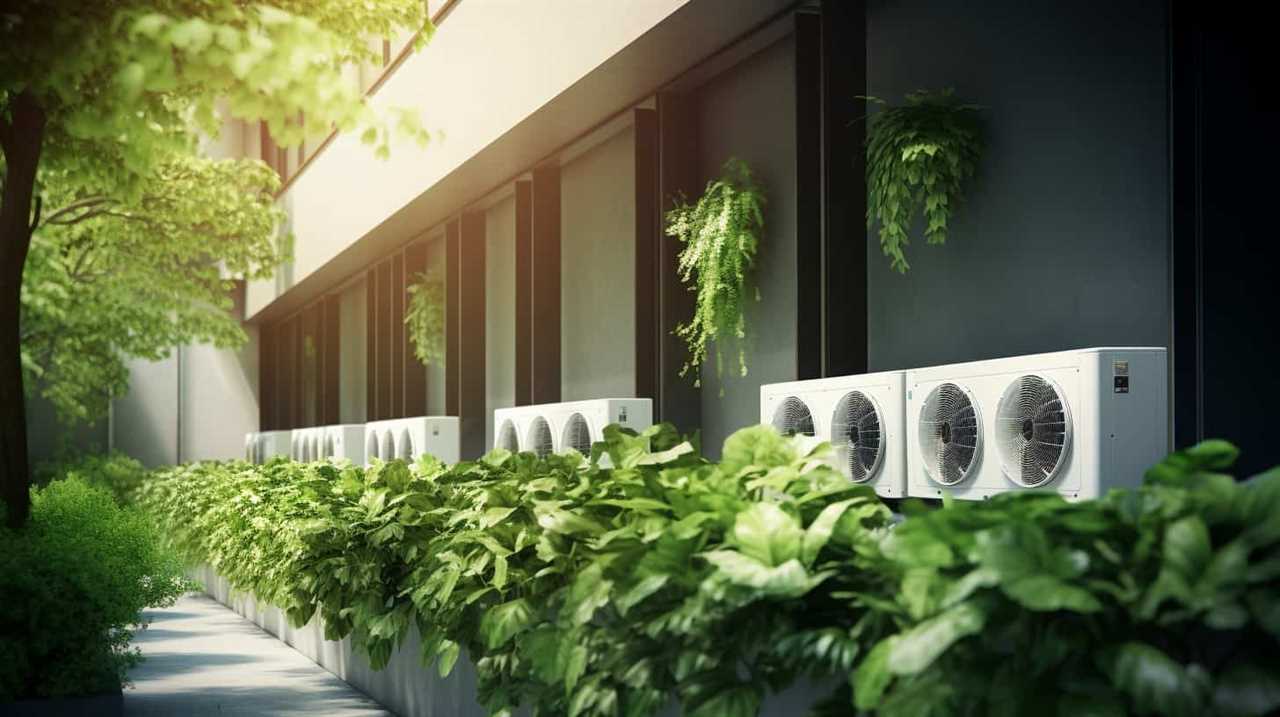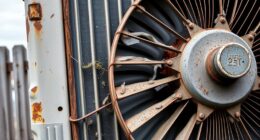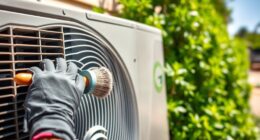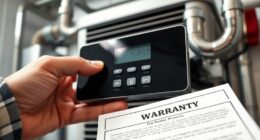Are you fed up with expensive electricity bills? We have the perfect solution for you.
In this article, we’ll show you how to unlock energy savings with our heat pump efficiency tips.
Imagine reducing your monthly heating and cooling costs while keeping your home comfortable all year round.
With our expert advice, you’ll learn how to choose the right size heat pump, install it properly, and maintain it for maximum efficiency.
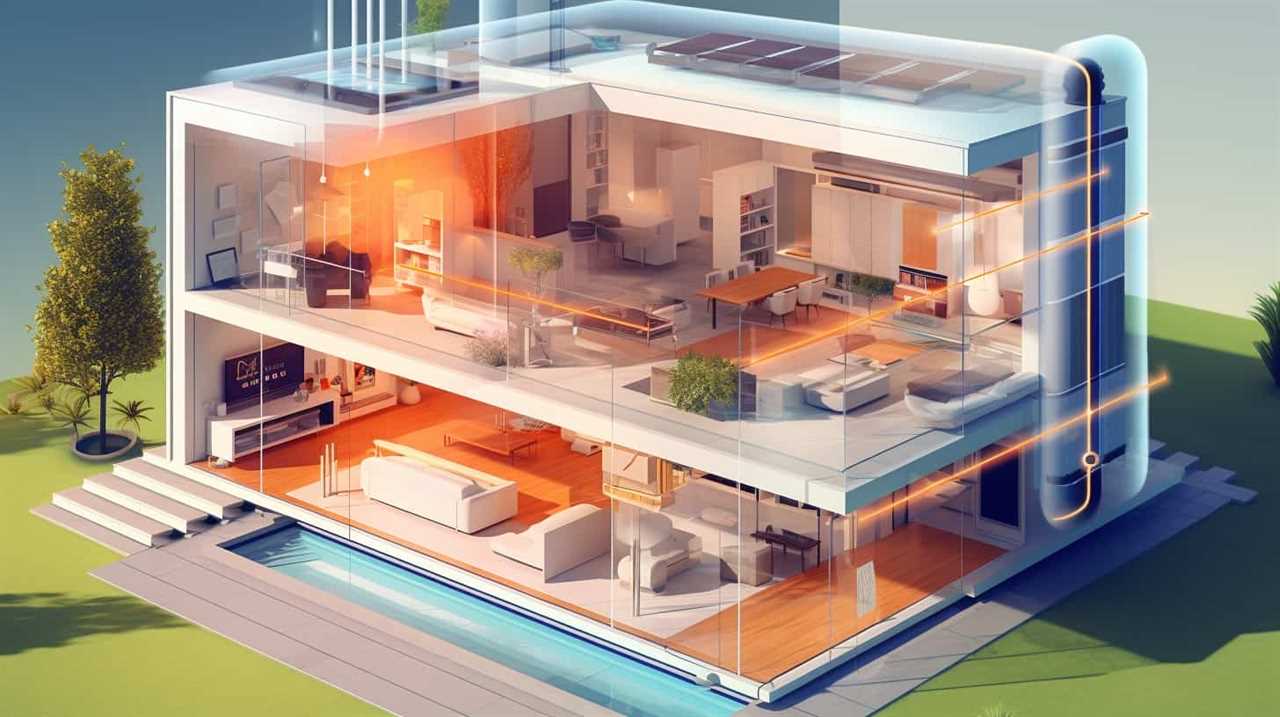
Get ready to save money and energy with our advanced strategies.
Key Takeaways
- Understanding heat pump efficiency is crucial for choosing the right heat pump and troubleshooting problems.
- Proper sizing of the heat pump according to factors like square footage, insulation, and climate conditions ensures optimal performance and energy efficiency.
- Adequate airflow, easy maintenance access, and correct installation techniques are important for proper heat pump installation.
- Regular maintenance, including cleaning or replacing air filters and outdoor coils, inspecting thermostat settings, and scheduling professional maintenance, is essential for heat pump efficiency.
Understanding Heat Pump Efficiency Ratings
We need to understand heat pump efficiency ratings in order to make informed decisions about our energy usage. Heat pumps are designed to transfer heat from one place to another, providing both heating and cooling capabilities. However, not all heat pumps are created equal in terms of efficiency.
Efficiency ratings, such as the Seasonal Energy Efficiency Ratio (SEER) and the Heating Seasonal Performance Factor (HSPF), help us determine how efficiently a heat pump operates. By understanding these ratings, we can choose a heat pump that’s suited to our specific needs and climate conditions.
Additionally, understanding efficiency ratings can help us troubleshoot common heat pump problems. For example, if a heat pump isn’t providing adequate heating or cooling, it may be due to a low efficiency rating or a malfunctioning component.
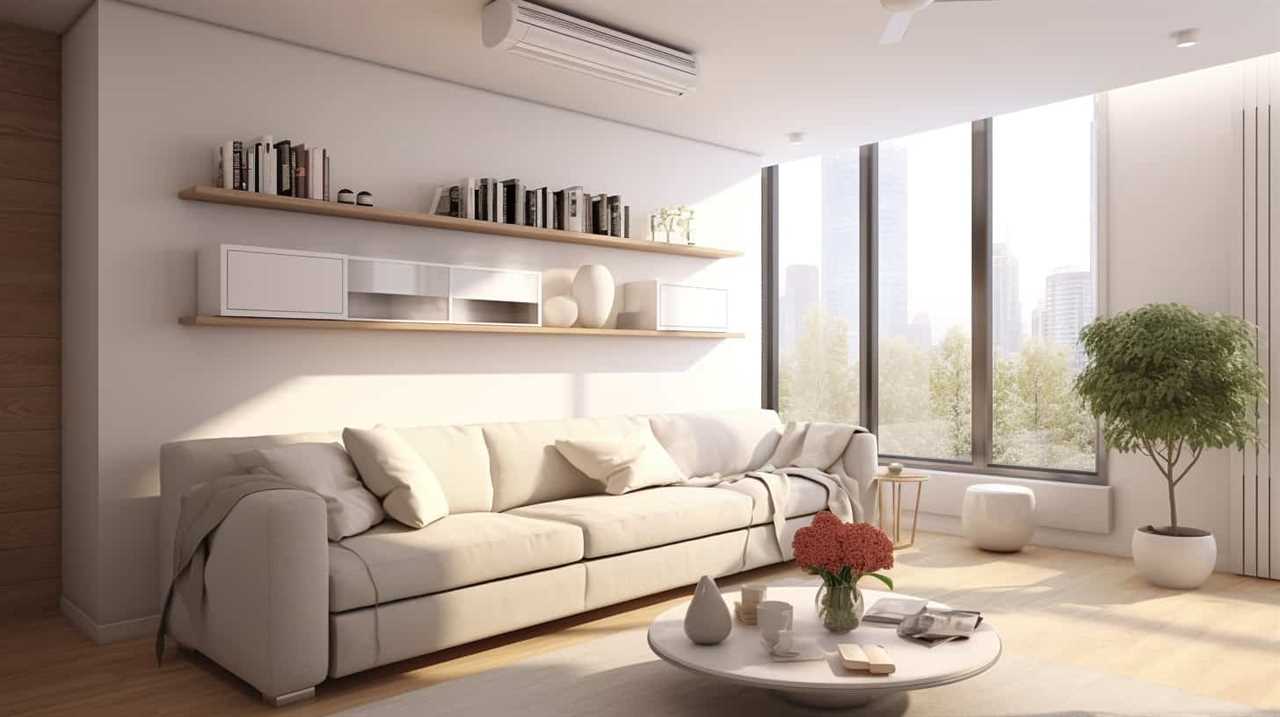
Choosing the Right Size Heat Pump for Your Home
When choosing the right size heat pump for our home, it’s important to consider factors such as the square footage, insulation, and climate conditions. Heat pump sizing considerations are crucial in order to ensure optimal performance and energy efficiency.
A heat pump that’s too small may struggle to adequately heat or cool the space, while a unit that’s too large may cycle on and off frequently, leading to energy wastage and reduced comfort. Accurate measurements of the square footage of the area to be heated or cooled are essential for proper sizing.
Additionally, the insulation levels in the home play a significant role in determining the heat loss or gain. Lastly, climate conditions must be taken into account to determine the appropriate heat pump capacity.
Proper Heat Pump Installation Techniques for Maximum Efficiency
To achieve maximum efficiency, it’s crucial to ensure proper heat pump installation techniques are followed. Heat pump troubleshooting and optimizing heat pump performance start with a correct installation.
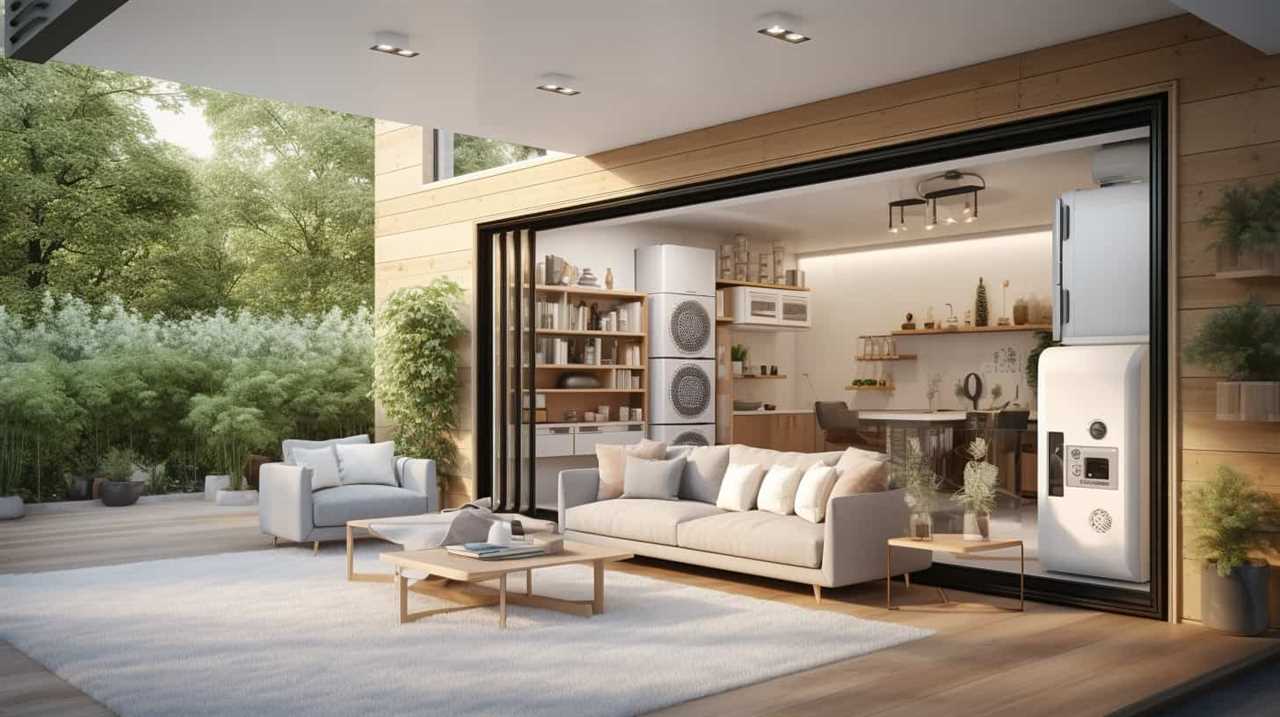
First and foremost, the heat pump should be positioned in a location that allows for adequate airflow and easy access for maintenance. The outdoor unit should be placed on a stable and level surface, away from obstructions that could impede airflow.
Additionally, the indoor unit should be installed in a central location with proper insulation to minimize heat loss.
Proper refrigerant charging is also essential for optimal heat pump performance. This involves accurately measuring and adjusting the refrigerant levels to manufacturer specifications.
Lastly, electrical connections and controls must be installed correctly for safe and efficient operation.
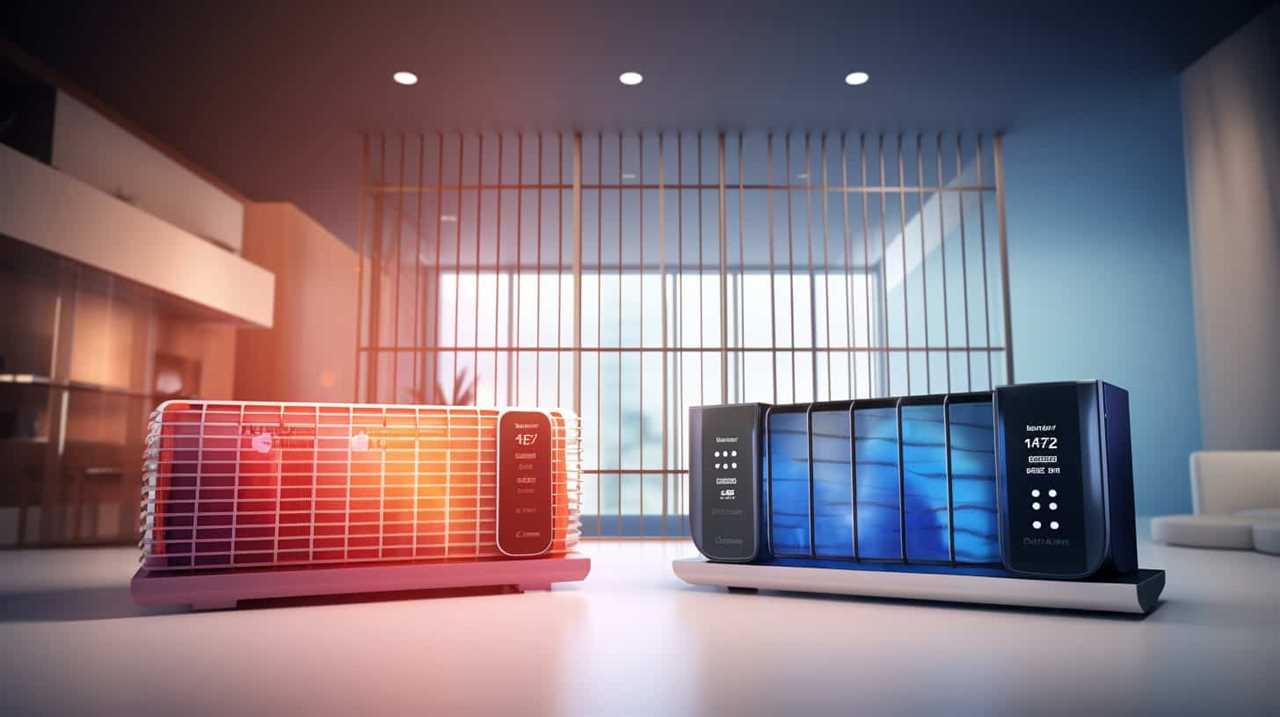
Maintenance Tips to Keep Your Heat Pump Running Efficiently
For optimal performance and energy efficiency, it’s important to regularly maintain and care for your heat pump. By following these energy saving tips and troubleshooting techniques, you can ensure that your heat pump continues to run efficiently.
Firstly, it’s crucial to regularly clean or replace the air filters in your heat pump. Dirty filters can restrict airflow and reduce the unit’s efficiency. Additionally, check and clean the outdoor coils to remove any debris that may hinder heat transfer.
Next, inspect the thermostat settings and ensure they’re programmed correctly. Adjusting the temperature settings by a few degrees can result in significant energy savings.
Furthermore, make sure to inspect and lubricate the motor and fan bearings, as well as tighten any loose electrical connections. This will help prevent motor failure and reduce energy consumption.

Finally, schedule regular professional maintenance to identify and address any potential issues before they become major problems. This won’t only keep your heat pump running efficiently but also extend its lifespan.
Advanced Energy-Saving Strategies for Your Heat Pump
One of the most effective ways to maximize energy savings with our heat pump is by implementing three advanced strategies. These heat pump optimization techniques and energy saving settings for heat pumps can significantly reduce our energy consumption and lower our utility bills.
First, we should consider installing a programmable thermostat. This allows us to set different temperatures for different times of the day, ensuring that our heat pump operates efficiently and only when needed.
Second, we can optimize the airflow in our home by regularly cleaning or replacing air filters. This simple maintenance task can improve the heat pump’s performance and prevent unnecessary energy waste.
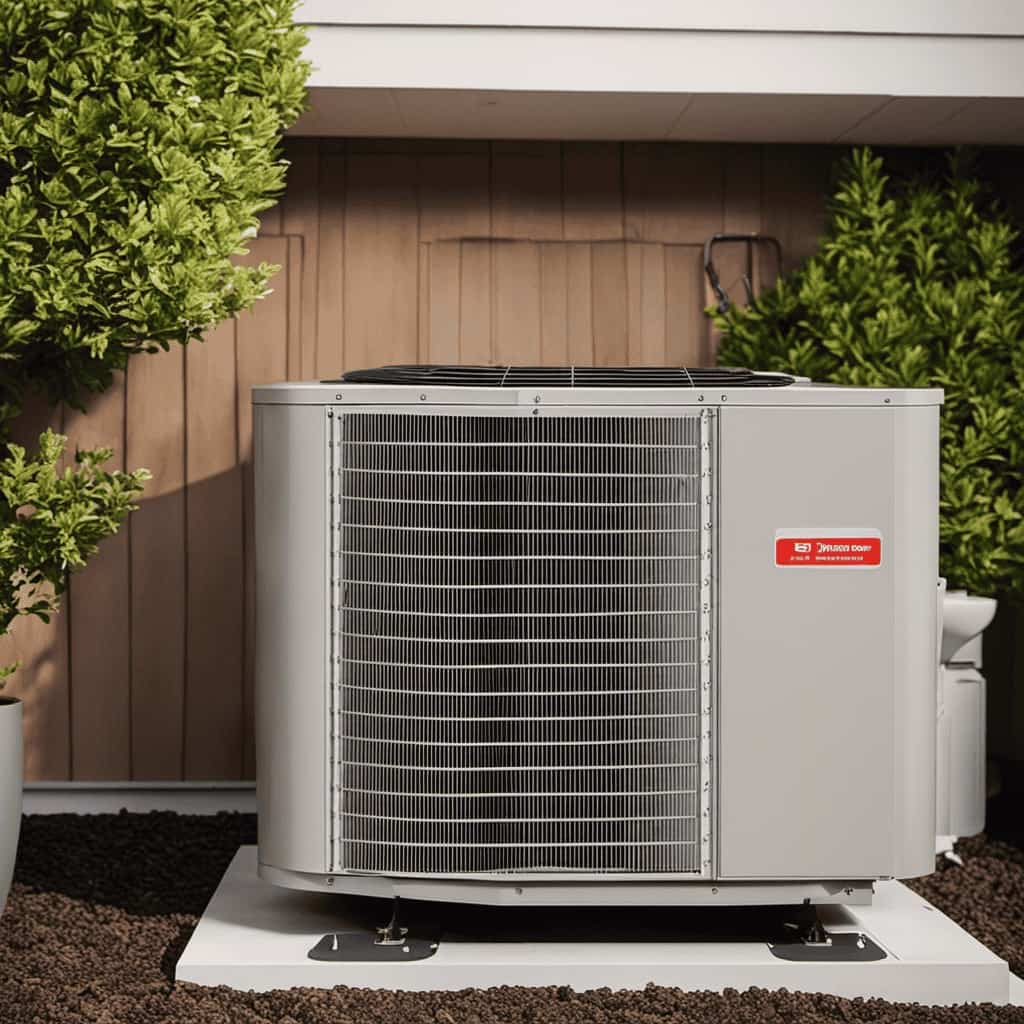
Lastly, we should take advantage of the heat pump’s advanced settings, such as the ‘economy mode’ or ‘night mode.’ These settings adjust the temperature and operation of the heat pump to further reduce energy usage without sacrificing comfort.
Frequently Asked Questions
Can I Install a Heat Pump Myself, or Do I Need to Hire a Professional for Installation?
We recommend hiring a professional for heat pump installation. While DIY heat pump installation may seem tempting, it is a complex process that requires technical expertise. The benefits of professional installation include ensuring safety and optimal performance.
What Are the Main Differences Between a Heat Pump and a Traditional Air Conditioner or Furnace?
Heat pumps differ from traditional air conditioners or furnaces in terms of efficiency and operation. They are more efficient because they transfer heat rather than generate it, and they can both cool and heat a space.
How Long Does a Heat Pump Typically Last Before Needing to Be Replaced?
Heat pump lifespans vary, but signs of replacement include reduced efficiency, frequent repairs, and age exceeding 15 years. It’s important to schedule regular maintenance to prolong the lifespan and efficiency of your heat pump.

Are Heat Pumps Noisy When in Operation?
Heat pump noise level can vary depending on factors like the model, location, and maintenance. However, there are ways to reduce heat pump noise, such as using noise-reducing barriers or installing the unit on vibration isolators.
Can a Heat Pump Be Used as the Sole Source of Heating and Cooling in a Home, or Is It Necessary to Have a Backup System?
Yes, a heat pump can be used as the sole source of heating and cooling in a home. It is an energy-efficient alternative to gas furnaces, providing both heating and cooling capabilities.
Conclusion
In conclusion, understanding and implementing heat pump efficiency tips can lead to significant energy savings in your home.
Did you know that according to the U.S. Department of Energy, properly maintaining your heat pump can improve its efficiency by up to 25%?

By choosing the right size, installing it correctly, and regularly maintaining it, you can maximize the efficiency of your heat pump and reduce your energy consumption, ultimately saving you money and benefiting the environment.

